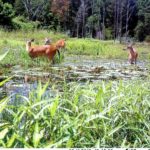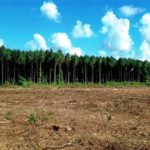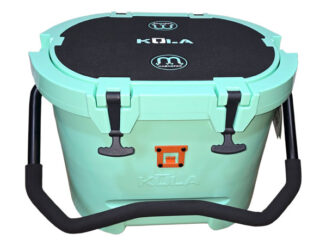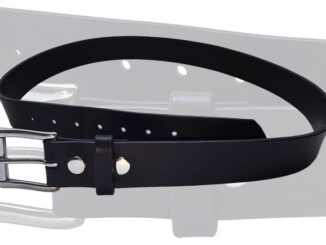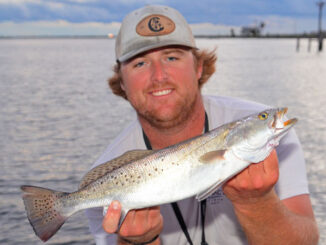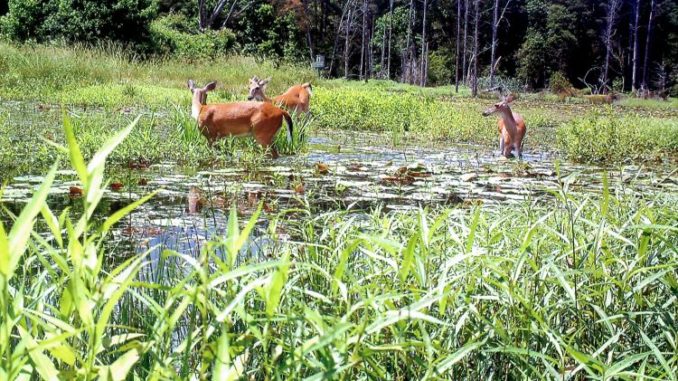
Lack of new state record buck in 74 years points to concerns
The key to a good deer management program is good habitat — plain and simple. The research that has been done measuring the impacts of good deer habitat is crystal clear on the subject: Good habitat provides the nutrition needed for optimal body growth and antler development.
Six-month-old male fawns will weigh 60 pounds or more and double their weight at age 1 ½, which means these yearling bucks will weigh 120 pounds or more. Research has shown that these bucks should produce small branched antlers if the nutrition is adequate and the herd is in balance with the habitat. Body weight at age 2 ½ should indicate a 30 to 40 percent increase, meaning those 120 pound yearlings should weigh 160 to170 pounds. Another 30 percent increase at age 3 ½ will produce a buck that weighs close to 200 pounds.
Antler growth will be similar to body growth, with increases in antlers occurring from year to year. The plain and simple truth is that such growth and development is simply not happening today in the Bayou State. On much of the deer habitat across the state, 1 ½ year old bucks average between 100 and110 pounds. The 2 ½ year old age class does have about a 30 percent increase in body size, but after this, the older age classes are increasing maybe 10 percent annually. Unfortunately, the overall quality of deer habitat in this state has dramatically declined over the past 25 years.
Where is the new state typical record?
When I retired from Wildlife and Fisheries in 2007, I made the prediction that the typical state record of 184 6/8 B&C would be broken at some point over the next 10 years. This has not happened. A check of the Top 25 typical bucks on the gun kill list shows that the 184 6/8 B&C buck killed in 1943 by Don Broadway in Madison Parish is still the top deer. There have been three bucks killed in the past 10 years that made the Top 25, coming in at No. 16, No. 23 and No. 24. The No. 23 buck was killed by Charlie Lusco last season and was promoted as the new state record. That fine buck scored 173 6/8, a mere 11 points shy of the top spot.
Hunters today are looking for big bucks — and many won’t even shoot a buck unless it will make the cover of a magazine — so the hunting pressure is high in the quest for a new record. So where is the new record, and why hasn’t the old one been broken? I suspect that habitat conditions are the reason.
Changes in the Louisiana landscape have caused a decline in habitat quality, and the nutrition needed to grow this new state record appears to be lacking, especially in the pine/hardwood habitat.
In the 90s, timber companies and foresters on private land began a new forestry program that involved the chemical treatment of hardwood species to remove them from the pine forest. This intense management work has resulted in a dramatic decline of available browse. Pine timber stands became void of the hardwood species that provide browse for deer. Pine stands have become dominant pine, with an understory of sweetgum, yaupon and climbing fern — none of which do much for body growth and antler development. Clearcuts that were once a deer factory have lost much of the productivity that hunters crave.
Pine/hardwood forest stands have become dominated with pine, which probably accounts for 70 or more percent of the tree species in the stand, resulting in poor habitat for deer. It will give them food to keep them alive, but as far as the growth and development that hunters are looking for — it’s just not there. Annual growth and development is poor, leaving hunters with a lot of small bucks in the older age classes that may never get shot because hunters think they are young deer that will get better.
It’s a vicious never-ending cycle. Compound this poor growth with the idea of increasing deer numbers in this low quality habitat, and growth and development worsens.
In bottomland habitat, there has been much work done to restore the hardwood component that was removed to grow ag crops — but a new state record has not materialized. While this habitat should have the nutrition needed to grow a new state record buck, the fact is that too many deer on quality habitat will cause a decline in growth and development.
Today’s hunter is not very interested in shooting a bunch of does, so this element of deer management may be the reason for less than desirable growth. It’s a fine line between a herd in balance with the habitat, and one that is above carrying capacity. Once the numbers move above that line, it’s difficult to get it back where it should be. Again, hunters like to see lots of deer and they often think that with good habitat and a feeding program they can have all the deer in the world.
So what is good deer habitat?
For the most part it is habitat that maintains the individual animal in a healthy growing condition. All habitat is not the same, and consequently growth and development is different on different habitat types. LDWF has a wealth of information regarding the specific growth and development that can be achieved on marsh habitat, which is certainly going to be different from a well-managed mixed pine/hardwood forest. Habitat conditions can be improved for deer on these various site, and it’s certainly worth working with a biologist to discover what your present habitat conditions are and what work you can do to improve body growth, antler development and productivity.
